Biosecurity newsletter
Spring 2019 | Issue 4

Welcome to the spring edition of our Biosecurity Newsletter
In this edition we look at biosecurity management plans and some of the important changes that have been made to enable producers to better protect their property from the risks of pests and diseases and illegal trespassers.
From 1 August, any persons entering an area where a biosecurity management plan applies, must comply with the measures outlined in the plan. This provides extra protection against the biosecurity risk of unlawful entry. More information about preparing a biosecurity management plan can be obtained from the NSW Department of Primary Industries or your Local Land Services office.
We’re also encouraging industry, producers and the community to have their say on the proposed reforms to the Property Identification Codes (PICs). The reforms are being led by the Australian Government Department of Agriculture and are aimed at developing nationally consistent arrangements for the allocation and use of property identifiers for the animal and plant production sectors.
As always, we welcome your feedback. Enjoy reading.
Bruce Christie
Deputy Director General, Biosecurity & Food Safety
Biosecurity Symposium 2019
Animal Health Australia, together with the Invasive Species Council and the Centre for Invasive Species Solutions, hosted the inaugural 2019 Australian Biosecurity Symposium, on the 12-13 June at the Gold Coast, QLD. The theme of this year’s event was preventative biosecurity practices, with many of the 90 presentations focusing on research and innovation and behavioural change to better protect our economy, environment and way of life.
Almost 400 delegates from around the world attended the event to discuss how we can future-proof our multi-billion dollar agricultural industry and environment and influence the direction of Australia’s future biosecurity system, network, develop new concepts, share and test ideas, build new partnerships and engage in challenging discussions that stimulated debate and energy.
A number of NSW DPI staff presented their knowledge on agriculture, pest animals, weeds, wildlife, aquatics and the environment. Insightful and engaging presentations were given by eco-visionary, host of ABC’s Gardening Australia and MC, Costa Georgiadis, Chief Environmental Biosecurity Officer from the Department of Agriculture, Ian Thompson and CEO of Centre for Invasive Species Solutions, Andreas Glanznig. The plenary sessions at the Symposium were creatively captured and summarised through live illustration.
The 2nd Australian Biosecurity Symposium will be held in 2021 with a workshop to be held in 2020 to progress key outcomes from this year’s Symposium.

Some participants at the 2019 Biosecurity Symposium
Some participants at the 2019 Biosecurity Symposium

Eco-visionary, host of ABC’s Gardening Australia and MC, Costa Georgiadis
Eco-visionary, host of ABC’s Gardening Australia and MC, Costa Georgiadis

The plenary sessions at the Symposium were creatively captured and summarised through live illustration.
The plenary sessions at the Symposium were creatively captured and summarised through live illustration.
Focusing on careers in Ag
In August, our Invasive Species team, together with over 1200 students from around NSW, attended AgVision, a leading agricultural and agribusiness careers expo at Sydney Olympic Park dedicated to informing years 9-12 students and their educators about the range of careers available in agriculture, science, technology and agribusiness.
With over 50 presentations lead by industry professionals, students were provided with a personalised timetable of sessions based on their preferences.
AgVision 2019 highlights of the hay
Our invasives team spoke about a career in Biosecurity and how to help protect what we love from the pest animals we don’t.
For more information see: www.rasnsw.com.au/events/agvision/
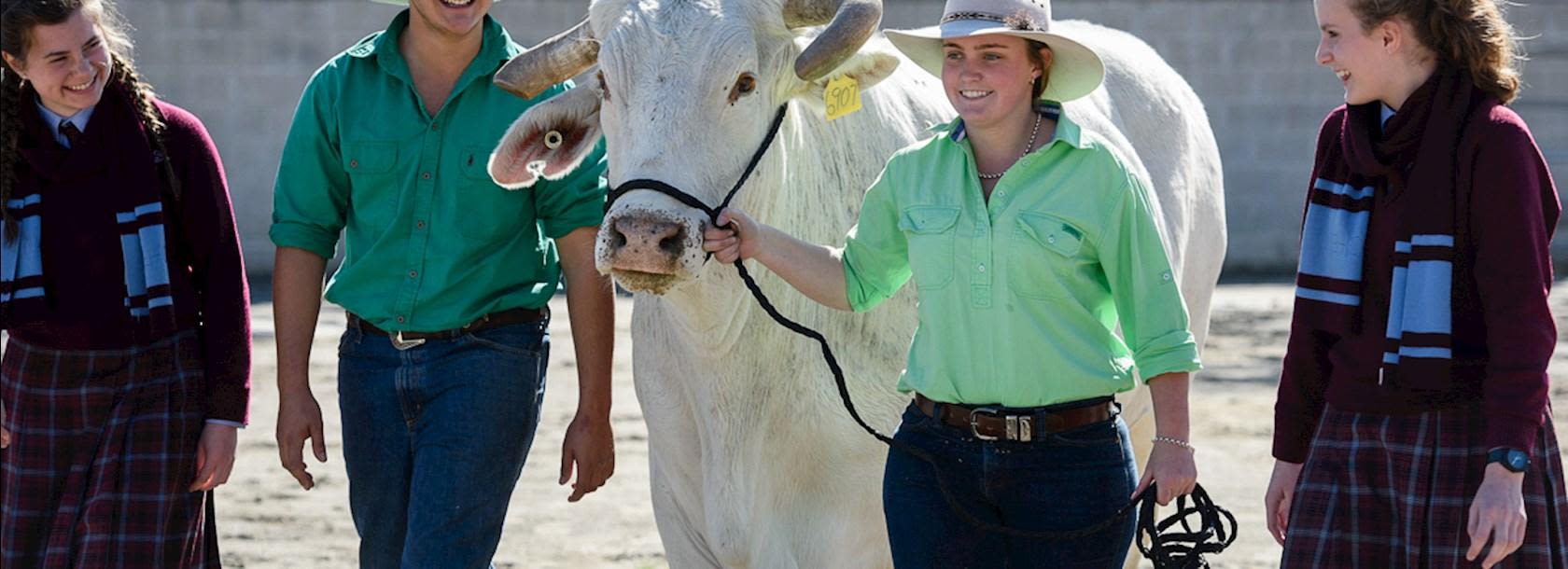
Nominations open for 2019 NSW ‘Farmer Of The Year’ and ‘Young Farmer Of The Year’
The prestigious ‘Farmer of the Year’ award is now open for applications, with the ‘Young Farmer of the Year’ award back by popular demand for the first time in several years.
These awards recognise excellence in the NSW agricultural sector, and this year more than ever, it is vital that the ongoing efforts of our farmers and their families are acknowledged and their achievements celebrated, as they continue to face one of the worst droughts in living memory.
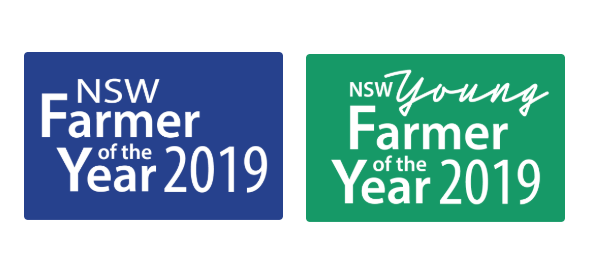
The NSW Farmer of the Year and the NSW Young Farmer of the Year awards are designed to recognise excellence in the state’s agricultural sector.
The NSW Farmer of the Year and the NSW Young Farmer of the Year awards are designed to recognise excellence in the state’s agricultural sector.
The awards provide an important opportunity to promote the agriculture sector and help contribute to the future growth of the industry.
The NSW Farmer of the Year Award is open to all NSW farmers, fishers and foresters, while the Younger Farmer Award is open to those aged between 18 to 35.
Winners of each category will receive $4,000 in prize money, while runners up receive $2,000 in prize money. Nominations close on Monday, 23 September 2019.
For more information or to nominate an outstanding farmer, visit NSW Farmer of the Year awards
The awards are an initiative of NSW Department of Primary Industries (DPI) and NSW
Farmers, with support from SafeWork NSW and The Land newspaper.
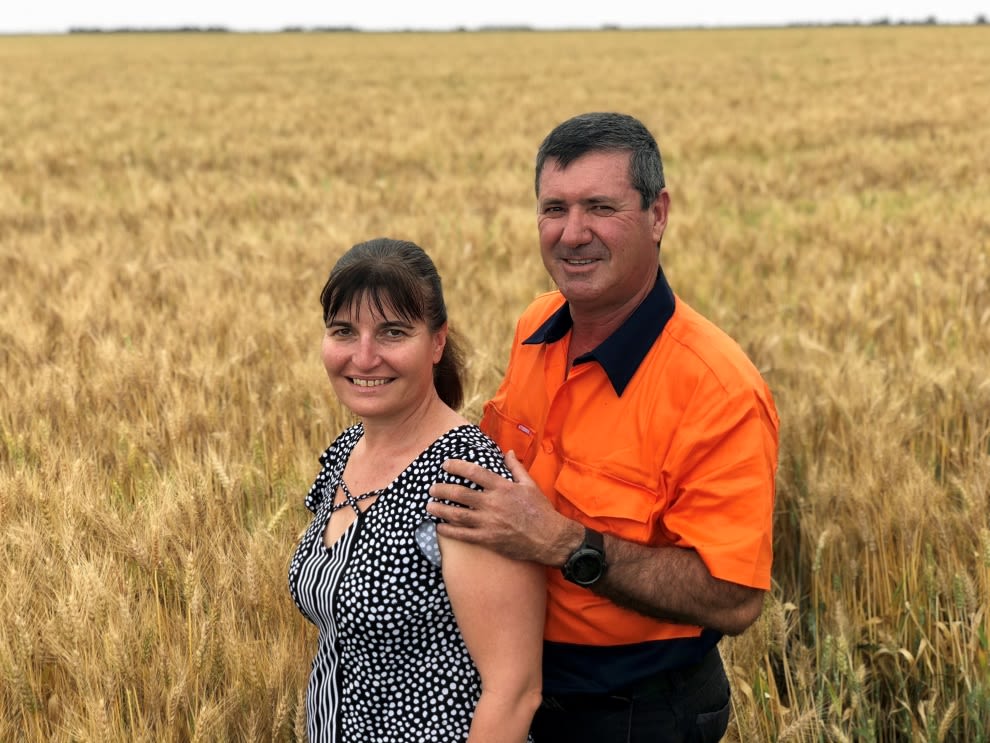
2018 NSW Farmer of the Year winners Glen and Julie Andreazza from GJA Farming, Willbriggie NSW
2018 NSW Farmer of the Year winners Glen and Julie Andreazza from GJA Farming, Willbriggie NSW
Biosecurity Management Plan - safeguarding your property
Producers are being urged to adopt a Biosecurity Management Plan (BMP) to reduce biosecurity risks and increase protection against trespasses.
A BMP provides an effective tool to help producers document all the biosecurity risks to their property and includes a wide range of activities and plans to prevent and help manage various pests and diseases. Arrangements in BMPs aim to prevent and minimise the biosecurity risks posed by people entering any property where commercial agricultural or horticultural activity, including processing and education, occurs.
Changes to the Biosecurity Regulation 2019 came into effect on 1 August 2019 and now mean that any person entering a property with a BMP must comply with the measures outlined in the plan. Adhering to a plan helps to ensure that a high standard of plant and animal health is maintained and that producers meet market and export requirements whilst supporting the continued production and profitability of the property.
The new changes serve as a timely reminder for property owners about the importance of having, and following, a BMP and the significant line of defence that it provides against visitors and trespassers bringing pests and diseases onto properties.
Under the changes, it will become mandatory for site visitors to comply with the measures outlined in the plan or face tougher penalties. Tougher penalties have also been introduced for trespassers who illegally enter farmers’ properties.
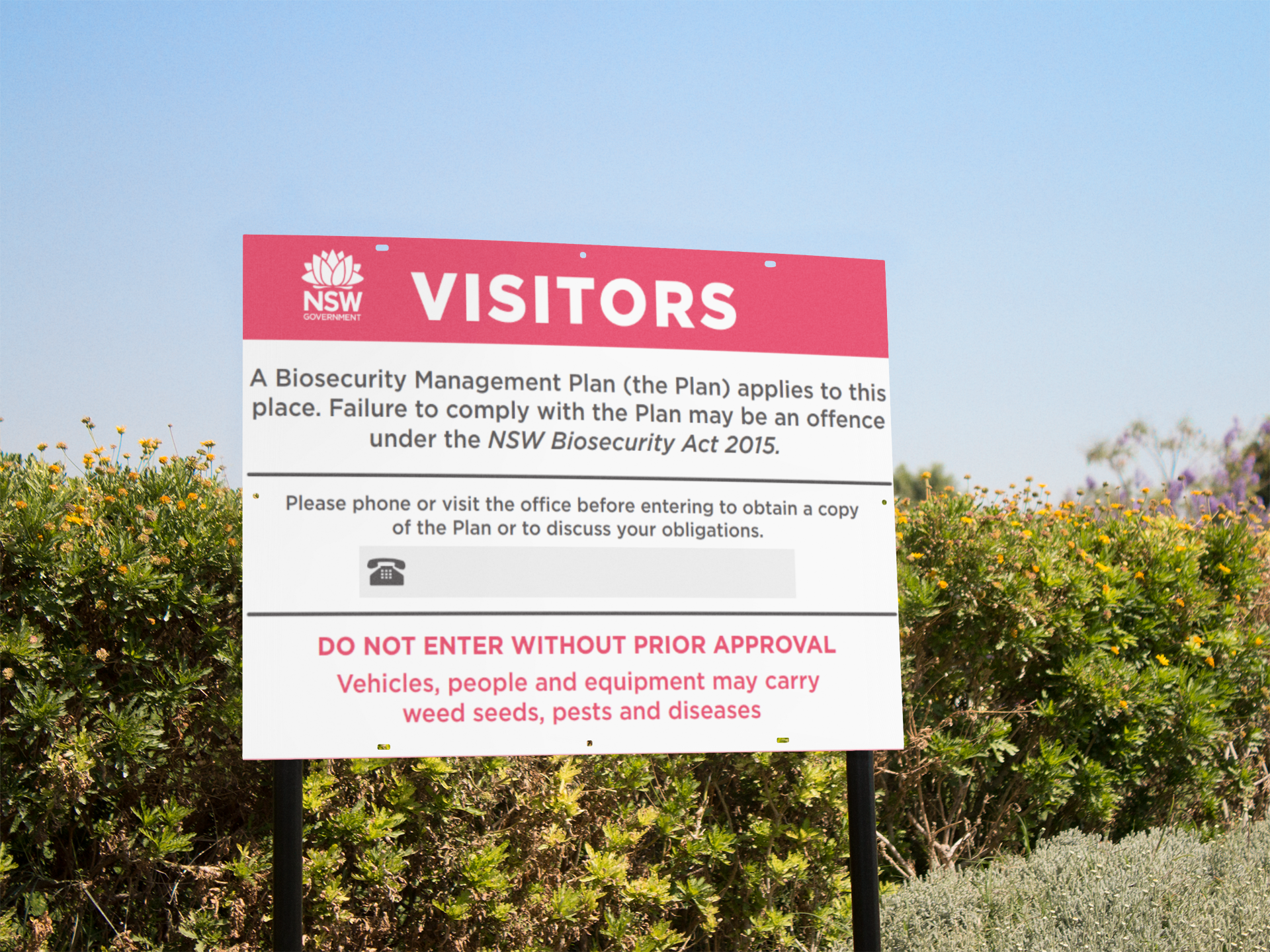
Signs must be displayed at the entrance to the management area to which your plan applies.
Signs must be displayed at the entrance to the management area to which your plan applies.
In what is regarded as a major reform to the State’s Biosecurity Act, a new offence has been created that will see trespassers on farms, creating biosecurity risks, handed an immediate on-the-spot fine of $1,000 and further court-ordered fines of up to $220,000 per person and $440,000 for corporations.
Anyone who enters a designated biosecurity area without permission and without complying with the plan’s requirements, may be subject to the new, harsher penalties.
The new penalties are the first stage of a broader suite of measures being developed to protect NSW farmers’ against both the serious biosecurity risks posed by visitors potentially bringing contaminants and diseases onto properties, as well as well as infringing on producers' right to farm.
To access the new offence, farmers will need to have a BMP in place, be actively following it and display appropriate signage at all entrances to the management area. Farmers are encouraged to contact the Department of Primary Industries or their Local Land Services office for more information or assistance in preparing a BMP.
For more information, visit Biosecurity Management Plan
Wollongbar celebrates 125 years as a leading centre for primary industries research
This year the NSW Department of Primary Industries’ (DPI) Wollongbar Primary Industries Institute celebrates 125 years as a leading centre for primary industries research.
Over 1000 people attended an Open Day held at the institute on Saturday 24 August, with guided tours, hands-on activities, historical displays, and information on the latest research discoveries to mark the occasion.
Minister for Agriculture and Western NSW, Adam Marshall opened the celebrations.
“Over the past 125 years, Wollongbar has serviced the community in the agricultural sector incredibly well, leading research in a number of key areas, particularly the cattle tick program and commercial recreational fishing,” Mr Marshall said.
Mr Marshall also broke new ground by turning the first sod of the $1.5million glasshouses being constructed at Wollongbar to enhance the research efforts of the blueberry and macadamia nut industries.
Institute Director Mark Hickey said that when Wollongbar became the site of the second experimental farm in New South Wales in 1894, its purpose was to test fruit crops, grasses and dairying suited to the subtropical climate. But its core goal to support the states farming industries hasn’t changed.
“Wollongbar is now a modern Institute located on more than 100 hectares of prime agricultural land, part of a network of DPI research facilities across the state,” Mr Hickey said.
Wollongbar Primary Industries Institue - 125 years growing our region
“Today the Institute continues to support primary industries with approximately 100 staff working in the field and in laboratories.
“We support profitable and sustainable agriculture, horticulture, fisheries and rural communities through research, compliance, education and industry engagement.”
Displays and activities at the Open Day gave the local community a fantastic insight into the research that occurs at the Institute including horticulture, beef cattle operations, the cattle tick program, a fisheries activity trailer, soils research, water testing, drones, rainforest walks, timber plantations, entomology, biosecurity and invasive species.
Throughout August, as part of the anniversary celebrations, staff at the Institute also held over 11 masterclasses to highlight some of the research undertaken and share knowledge with the community. Topics included Agricultural Land Use Planning, Integrated Pest Management and Disaster Preparedness, amongst others.
An Anniversary Dinner attended by over 80 ex-staff members, was also held on the evening prior to the Open Day.

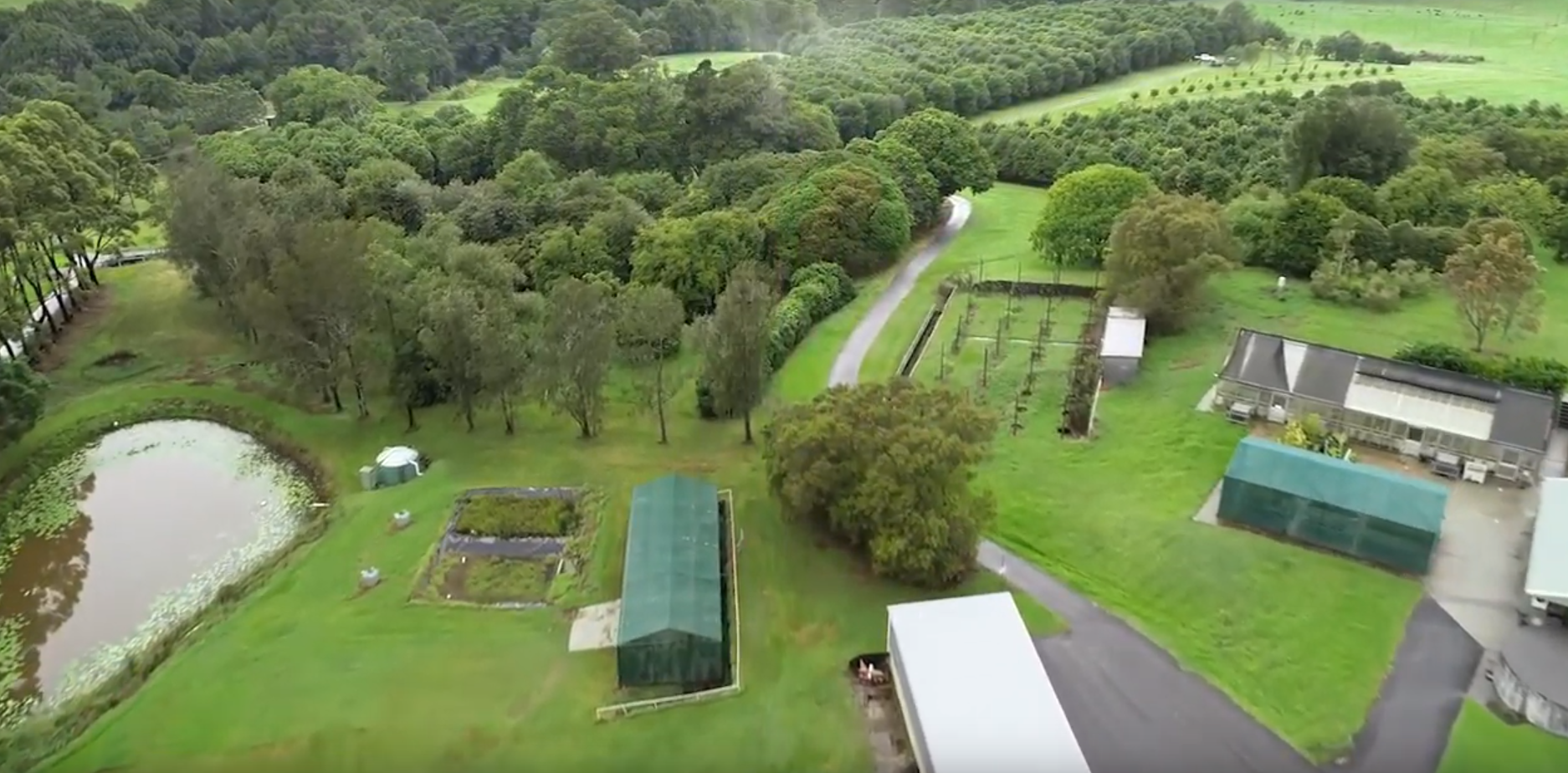
Mudgee Field Days
NSW DPI Biosecurity and Food Safety (BFS) was an exhibitor at this years Mudgee Small Farm Field Days which were held on the 12-13 July.
This event, which attracts over 20,000 visitors each year, aims to promote innovation and sustainability in agriculture and rural living as well as educate, inform and connect rural people with information and industry providers.
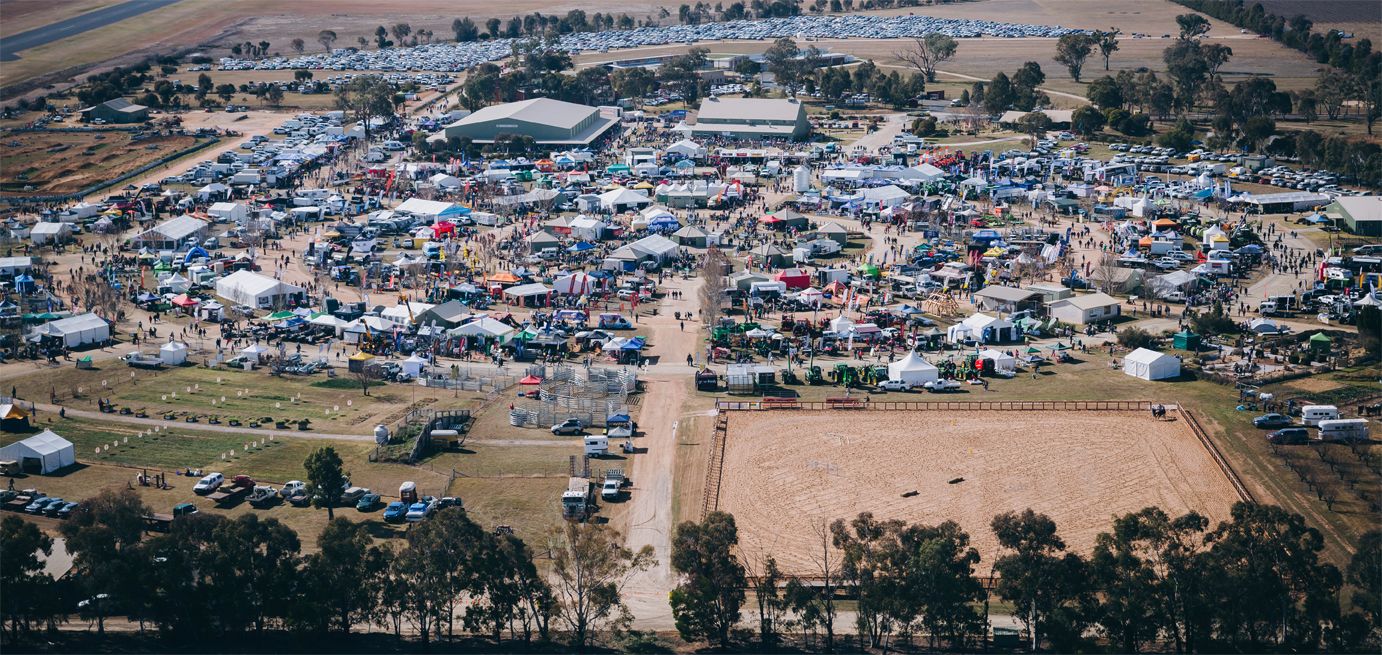
The Mudgee Small Farm Field Days has been running for over 40 years and attracts approximately 20,000 people per year.
The Mudgee Small Farm Field Days has been running for over 40 years and attracts approximately 20,000 people per year.
Our stand provided the opportunity to discuss best practice biosecurity including campaigns NSW DPI have facilitated and supported (such as the Most Unwanted and African Swine Fever) to protect our economy,environment and way of life. It also enabled BFS to raise awareness of the EMAI diagnostic services available to farmers.
Property identification reforms - enhancing agricultural traceability
Reforms to the Property Identification Code (PIC) system have been proposed following a review into national traceability systems.
The proposed reforms, led by the Australian Government Department of Agriculture via existing industry and government forums, are aimed at developing a nationally consistent system for the allocation and use of PICs across properties producing livestock, and plants and plant products.
The aim is to improve traceability and ensure ongoing export market access for our agricultural produce.
A PIC is a unique eight character code issued by Local Land Services to identify a property. With consumers increasingly demanding more information about the safety, quality, provenance and sustainability of their food, PICs play a vital role in supporting traceability systems by identifying those properties involved in production, processing and distribution.
Why you need a PIC number
PICs are integral to the National Livestock Identification System (NLIS), which is Australia’s scheme for the identification and tracing of livestock. Better traceability results in better returns at the farm gate, and promotes efficient and effective management and eradication of pests, disease or food safety incidents.
The most significant proposed change for industries and producers in NSW is to require a PIC for properties producing certain plants/plant products that are part of the supply chain.
This would be based on agreed threshold levels (eg. the quantity of product being produced or the size of the land under production) still to be determined in consultation with industry and government.
PICs have been mandatory for properties with any livestock since 2012 and were required by producers and other operators along the meat supply chain well before then. There has been no previous requirement for plant producing properties to obtain a PIC.
In order to build a harmonised traceability system, the National PIC working group has drafted a set of principles and business rules to be agreed nationally by the end of 2019. It is proposed that the development and introduction of any necessary legislative changes resulting in nationally consistent property identification arrangements, will be implemented by the end of 2022.
Overall in NSW, these proposed reforms will mean little change for livestock producers and other meat supply chain operators. Mixed farming properties already have a PIC so will not require an additional PIC for traceability of grain or other plants produced on that property. In NSW, PICs will always be our unique property identifier (UPI).
Draft principles and business rules and the opportunity to provide feedback on the proposed reforms, is available via the Australian Government Department of Agriculture’s ‘Have Your Say’ page.
In NSW we are particularly interested in your thoughts on the scope and type of industries required to have a PIC in the plant space, threshold levels for allocation of a PIC and, more broadly, the rules around amalgamations of PICs and non-contiguous (non-neighbouring) parcels of land operated by the same business.
Submissions will close on 1 November, 2019.
For more information on PICs visit www.dpi.nsw.gov.au/animals-and-livestock/nlis/pic or to obtain a PIC, contact the Local Land Services in your area.
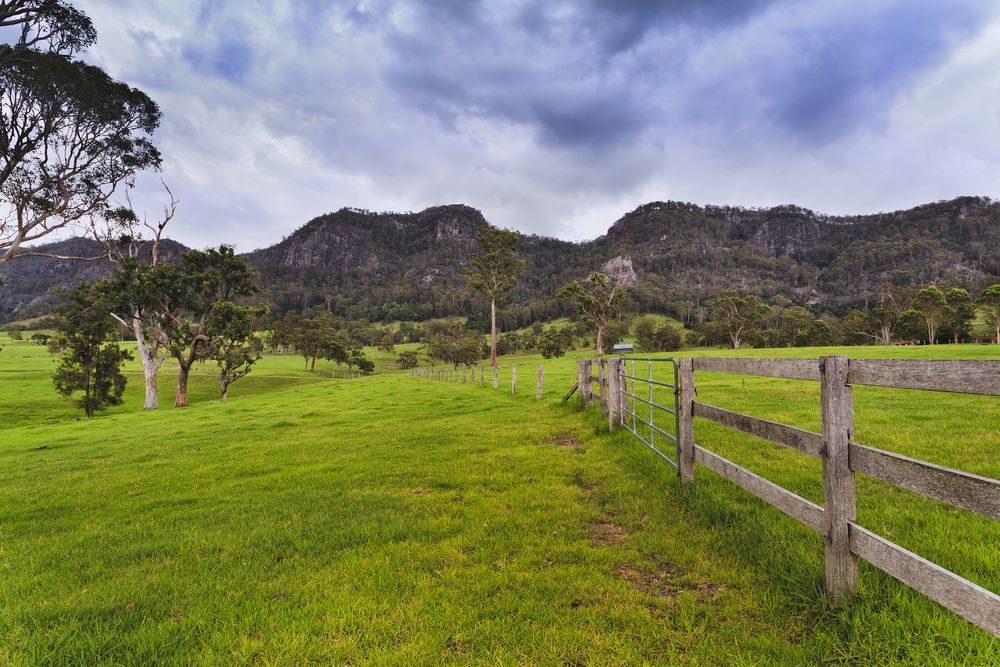
Meet Jordan, Leader Plant Pathology Curation
Name: Jordan Bailey
Occupation: Leader Plant Pathology Curation (Collections)
What does your role entail?
As curator of the Plant Pathology and Mycology Herbarium, I oversee over 120,000 specimens of plant pathogens, like fungi, bacteria and viruses, but also non-pathogenic fungi, like mushrooms and lichens.
These are mainly dried and pressed specimens of infected plant material but also includes 6,000 cultures of living fungi and bacteria, which enables a wide variety of applications such as studying host-disease interactions.
Our specimens are used to establish area of freedom for plant diseases and are the official plant disease records for NSW, as records of plant disease must be backed up by a physical specimen. They are also foundational to biosecurity research and diagnostics. In order to manage a disease, the causal agent must first be defined.
Reference specimens are vital for developing and carrying out diagnostics and also in the identification and defining of new species. All new species must have a voucher specimen held at a recognised collection. We have over 2,000 of these voucher specimens at the Herbarium and have recently undertaking photographing them all, to be shared online through biodiversity portals like the Atlas of Living Australia.
What projects are you currently working on?
We are currently working on a major data capture initiative for the Collections. We currently have a bit of a backlog of specimen databasing to do, some 250,000 specimens are not recorded electronically. We aim to get at least 100,000 of these done over the next few years.
What are three words you’d use to describe your current job?
Engaging, Varied, Unique
What do you like most about working at NSW DPI?
I love being located in Orange and the Collections and Biosecurity teams are filled with great people.
What are some of the challenges of your job?
Communicating the importance of the Collections and submitting specimens to Collections. Without a community of active contributors, Collections like ours risk becoming stagnant and less relevant. We need regular submissions of plant pests and diseases so the data and specimens can be pooled together, enabling bigger ideas about pest and disease identification and epidemiology to be investigated.
What are your top three career highlights?
- Engagement: The Collections is a really great way to engage the public in learning about plant health and biosecurity. We have been able to create several events, exhibitions and workshops. I have been interviewed in the local paper a few times and on the news and radio and have been involved in a podcast with Costa, which is always fun. This year, I presented to over 200 students for science week and exhibition at the Royal Botanic Gardens Living Lab.
- Funding: We have been lucky over the past two years to get support for Collections upgrades and equipment, not just internally, but externally too. Our “Heritage Near Me” grant has enabled us to photograph over 4,000 specimens from our collections, all of which will be shared online through the Atlas of Living Australia.
- Data capture: We are finally up and running with our new database. This database will allow us to capture data more easily and share it between DPI staff and externally to researchers and biosecurity officers.
Before working at NSW DPI, what was the most unusual or interesting job you’ve had?
Before working at NSW DPI, I spent three and a half years in the USA. During this time, I worked at Purdue University in Indiana and at the United States Department of Agriculture. The position at Purdue was managing the herbarium specimen imaging project. This involved photographing a few thousand specimens and checking their data with a team of undergraduate students. We also photographed a special collection of medicinal plants gifted to the university by the Eli Lilly Pharmaceutical Company. This collection included very old specimens; I kept seeing the same collectors name amongst them, who turned out to be a confederate medic. The specimens would have been used by him to correctly identify medicinal plants. There were all sorts of amazing pockets of history in that collection including specimens collected by George Washington Carver (an American agricultural scientist and inventor) and General Custer.
We also digitised the heritage materials associated with the Herbarium. When the founder of the Herbarium, Joseph Charles Arthur retired, he disagreed with the University about who owned the collection and one night packed up the entire thing (over 40,000 specimens) and took them home. He ultimately won and was paid three and a half cents per specimen. The request from the University President to return the specimens was sent to J. C. Arthur by the Sheriffa and can be viewed here.
The request from the University President to return the specimens was sent to J. C. Arthur by the Sheriffa and can be viewed here.
The request from the University President to return the specimens was sent to J. C. Arthur by the Sheriffa and can be viewed here.
The best thing about this story is that the same thing happened in the 1990s! When the director at the time felt the herbarium would be safer with him in retirement, he took some 30,000 specimens (he wasn’t able to take it all) to Texas with him. They were later returned in 2013, the year I started working there.
What does leadership mean to you?
Leadership means putting together a cohesive and capable team of people that are motivated and encouraged to do their best work; people who love their job and see it as more than a pay cheque. A leader should be there for their team, to give them direction and advice and they should be open, willing to listen and ready to help.

Dr Jordan Bailey, Leader Plant Pathology Curation
Dr Jordan Bailey, Leader Plant Pathology Curation
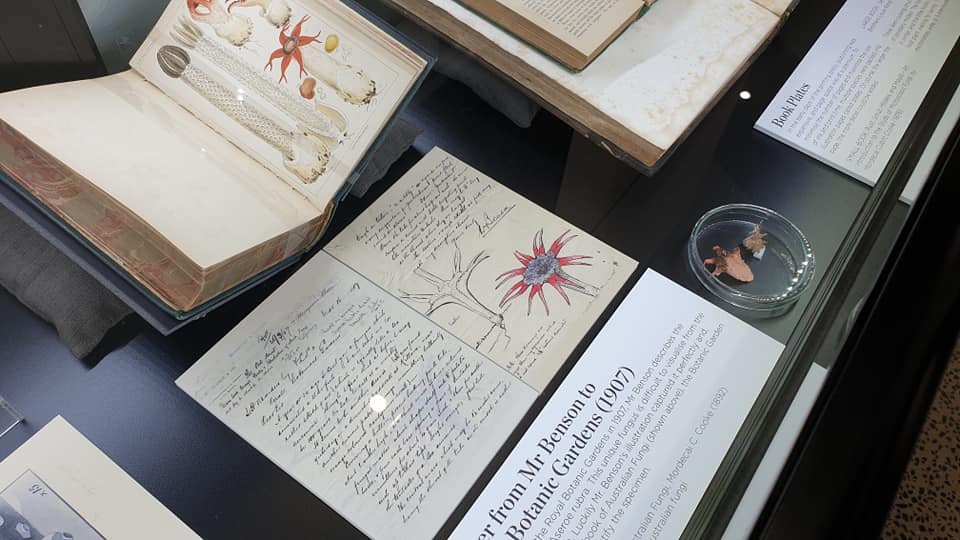
Exhibition at Orange Regional Museum. The Art of Scientific Illustration.
Exhibition at Orange Regional Museum. The Art of Scientific Illustration.

DPI Plant Pathology laboratory
DPI Plant Pathology laboratory
BIOSECURITY ALERTS
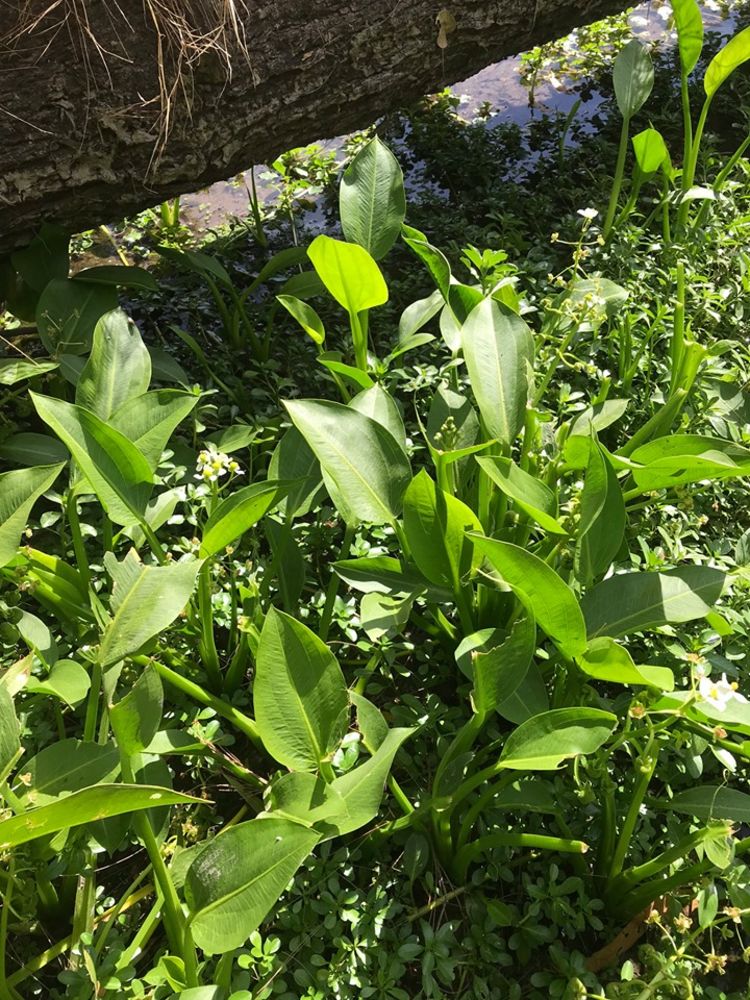
Are you and your family at risk of Q fever infection?
NSW Health is warning people to get vaccinated and to take other steps to prevent Q fever, as drought and high winds may increase the risk of the disease spreading.
Q fever is a serious illness which often appears like a severe flu, with high fevers and chills, sweating, severe headaches, muscle and joint pains and extreme fatigue. Chronic lethargy can remain for months after treatment. In severe cases, Q fever can cause hepatitis or pneumonia.
Q fever is a bacterial infection which is carried by cattle, sheep and goats, as well as native and some domesticated animals. It is caused by inhaling dust particles contaminated by infected animal secretions.
People who are in direct contact with farm animals, some domestic pets and wildlife are at risk of contracting Q fever. This particularly includes workers in occupations such as livestock and dairy farmers, farm workers, shearers, wool classers, stockyard workers and veterinary staff. Family members of workers are also at risk as the bacteria can be carried on farm tools or work clothes and brought into the family home.
People who live close to farming areas may be at risk of infection through indirect contact with infected animals, such as by breathing in contaminated dust.
Vaccination is the best protection against Q fever
The Q fever vaccine (Q-VAX®) is the best way to prevent infection. Vaccination is highly recommended for people who work or intend to work in high-risk occupations. Vaccination is also recommended for everyone aged 15 years and over who has the potential to be exposed to Q fever at home or locations they plan to visit.
People should also take the following steps to protect against Q fever:
washing hands and arms thoroughly in soapy water after any contact with animals
wearing a properly fitting P2 mask when handling or disposing of animal products or when mowing or gardening in areas with livestock or native animal droppings
wearing protective clothing and thick gloves when working with high-risk animals or animal products
removing and washing dirty clothing, coveralls, boots and equipment in outdoor wash areas to prevent exposing other household residents
washing animal urine, faeces, blood and other body fluids from equipment and surfaces and properly disposing of animal tissues including birth by-products.
For more information on Q fever, ask your GP or go to the NSW Health website.

For information regarding testing and vaccination against Q Fever, visit www.qfever.orgor visit the NSW Health website.
For information regarding testing and vaccination against Q Fever, visit www.qfever.orgor visit the NSW Health website.

Q-VAX® Q fever vaccine
Q-VAX® Q fever vaccine
African swine fever
African swine fever (ASF) continues its spread closer to Australia with the Philippines confirming it has tested positive to the deadly pig disease.
In response to the continuing spread, the Australian Government is undertaking additional activities to ensure that its biosecurity measures continue to protect Australia from exotic diseases. The department has suspended trade of high-risk pork products from affected countries and banned travellers bringing in pork jerky from all countries.
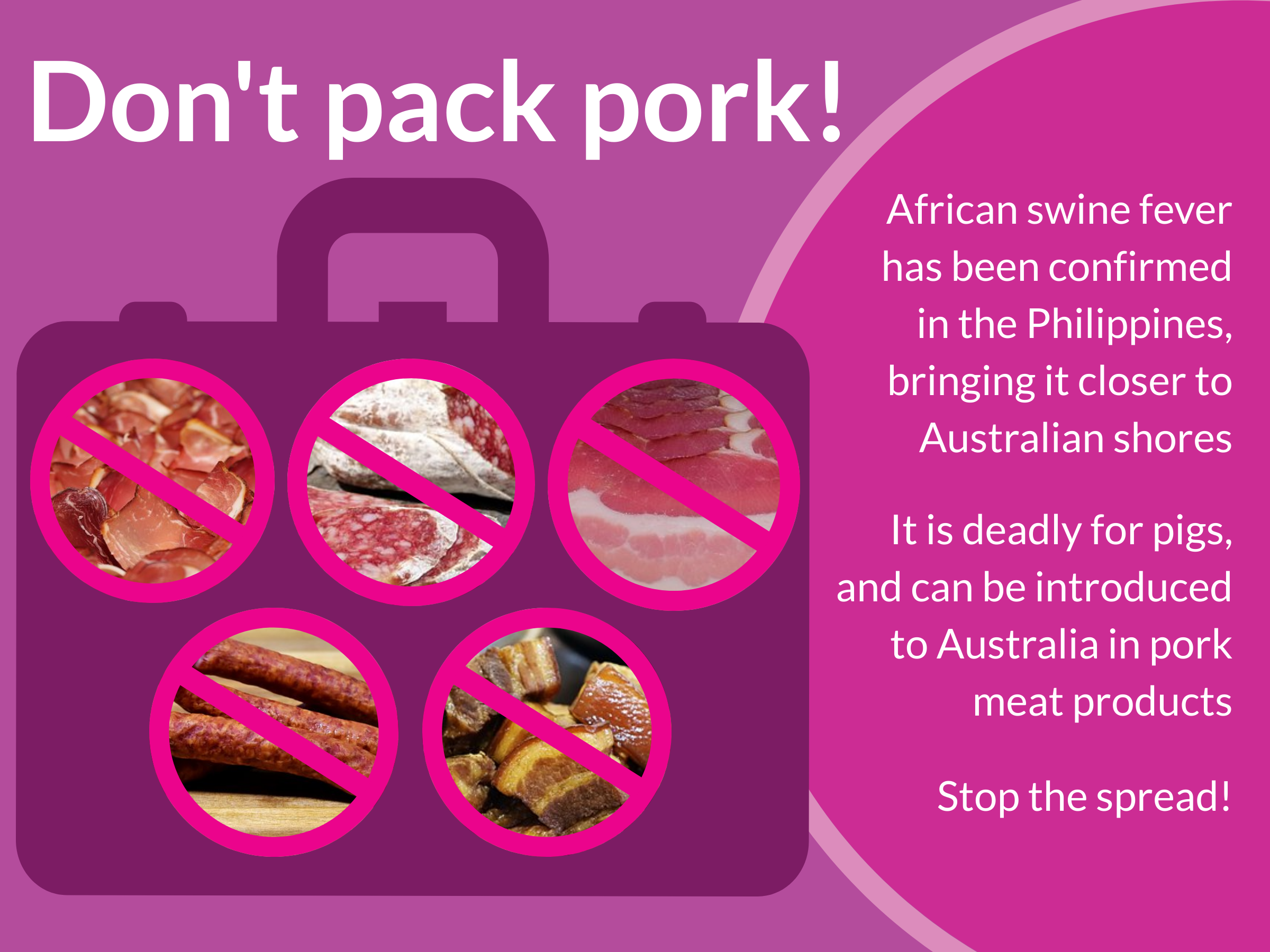
Don't pack pork!
Don't pack pork!
Increased screening measures and testing samples of pork products seized at international airports and mail processing centres for ASF and foot and mouth disease (FMD) have also been implemented.
There have been no reported cases of ASF in Australia and it is crucial that we remain free from the disease. An outbreak of ASF in Australia would have significant impacts on pig production and health. It would also compromise our access to economically important international markets and be very costly and difficult to eradicate.
We all have a role in preventing exotic diseases like ASF arriving in Australia. For more information about what you can do to help prevent an outbreak, visit African swine fever.
PLANT BIOSECURITY

Lupin disease eradicated in NSW
NSW has been declared free from lupin anthracnose disease following a successful eradication program led by the NSW Department of Primary Industries (DPI).
Lupin anthracnose is a fungal disease of lupin plants, which can lead to complete crop losses in susceptible varieties.
In October 2016, the serious disease was detected for the first time in commercial crops in the NSW Riverina region.
DPI Plant Biosecurity Director, Dr Satendra Kumar said early detection aided in the rapid response and subsequent eradication of the disease.
“We commenced work immediately with Local Land Services, Riverina lupin growers and industry advisers to restrict the disease to a small number of properties,” Dr Kumar said.
“A response plan was developed and a lupin anthracnose biosecurity management zone was established, restricting the planting of lupins within the zone during the eradication response.
“We undertook a case by case assessment of the infected crops to contain and control the disease, followed by ongoing surveillance, within the zone and across NSW for two growing seasons.
“As a result, I am pleased to be able to now officially declare, that due to no recurrence of the disease, the pest has been eradicated.
“Our partnership with industry was critical to the eradication efforts and ultimately spared NSW from the ravages of this disease.”
Lupin anthracnose is a notifiable plant pest in NSW.
The most obvious symptom in lupins is bending and twisting of stems, known as the “shepherds crook”.
Lupin growers and industry advisers must immediately report suspected cases to the Exotic Plant Pest Hotline on 1800 084 881 or by completing the online reporting form.
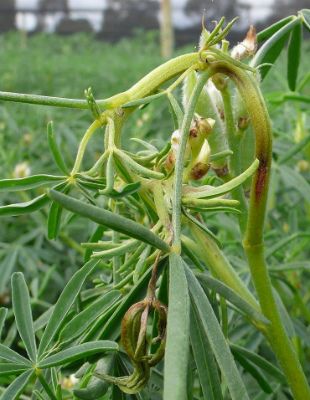
Infected lupin plant with Lupin anthracnose
Infected lupin plant with Lupin anthracnose
Boosting bee biosecurity
From 1 July 2020, it will be compulsory for beekeepers registered in NSW to ensure their management practices meet the minimum standards outlined in the Australian Honey Bee Industry Biosecurity Code of Practice (the Code).
The Code has been developed by industry in collaboration with all states and territories to provide a national minimum standard for beekeeping practices. The beekeeping industry has approached Government to make the Code a condition of beekeeper registration in NSW.
It is the responsibility of all beekeepers to make sure they are complying with all relevant parts of the Code prior to 1 July 2020 to avoid possible penalties following this date.
NSW DPI will be working closely with industry over the coming months to support beekeepers prior to the change coming into effect. Look out on the NSW DPI registration webpage for updates, resources, information sessions and FAQs and join our Bee Biosecurity Facebook Group.

TPP Adopt a Trap
NSW DPI is currently participating in a nationwide surveillance program for the insect pest tomato potato psyllid (TPP).
TPP is a small sap-sucking insect pest of solanaceous crops (e.g. tomato, potato, chilli, capsicum, eggplant) that was detected in Western Australia in 2017.
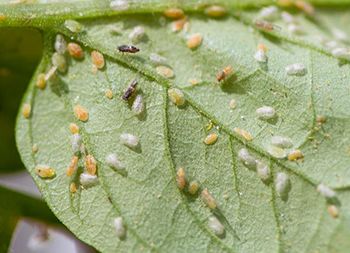
Tomato potato psyllid (TPP)
Tomato potato psyllid (TPP)
Whilst a new insect pest for Australia is never a good thing, TPP is a particular concern as it can transmit a damaging plant bacteria known as Candidatus Liberibacter solanacearum (CLso).
CLso and TPP are present in other parts of the world but so far only TPP has been found in Australia, not the bacteria.
Surveillance allows us to determine where TPP populations are present (so far only in WA) and also allows us to double-check any TPP that are found don't carry CLso.
For a few weeks over the spring, NSW DPI staff will deploy sticky traps across the Sydney basin to support the early detection of TPP. Diagnostic analysis of these traps will be completed by the Collections Unit at Orange Agricultural Institute. Surveys will be repeated around the country to provide valuable information for growers and biosecurity agencies alike.
TPP has not been found in NSW, and is a notifiable pest which means that any suspect detection must be reported to the Exotic Plant Pest Hotline on 1800 084 881.
INVASIVE PLANTS AND ANIMALS
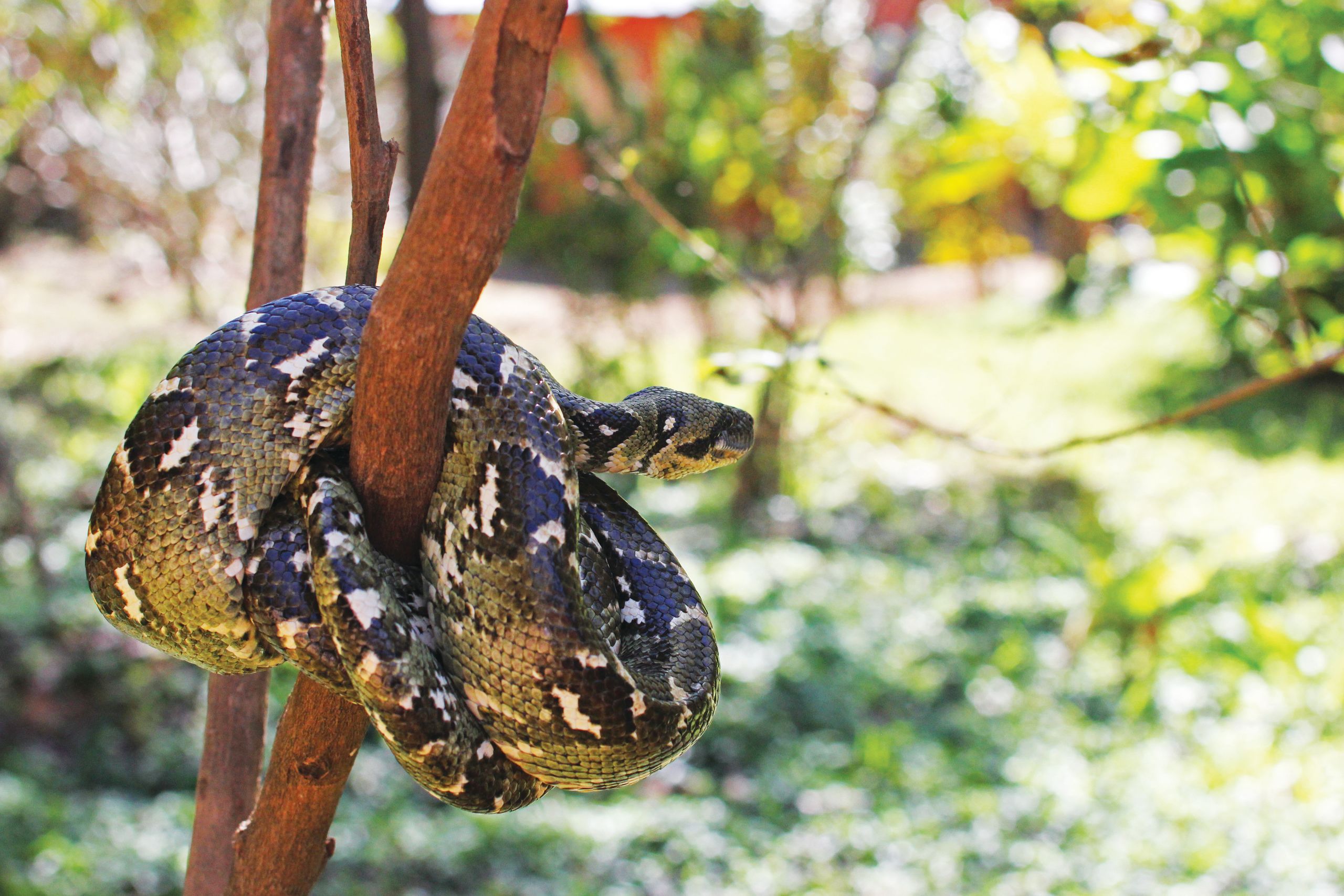
New recruits boost community awareness of invasive pests
We all know cane toads are toadally unwelcome in NSW, except these little toads who are being used to help teach NSW residents about the risks of invasive species, and how to identify and report sightings of them.
DPI has recently commissioned taxidermied cane toads and red-eared slider turtle models to distribute to NSW DPI, LLS and Local Government to use as surveillance and education resources at community get-togethers, school visits, field days, training days and presentations.
The cane toad is a serious invasive pest that is tough and adaptable as well as being poisonous throughout its life cycle. It can carry diseases that can be spread to native frogs and fish which can devastate our native wildlife and ecosystems.
The red-eared slider turtle is a high risk non-native invasive species that can colonise new areas very quickly and out-compete native turtles for food, breeding and basking sites. Wild populations of red-eared slider turtles have been reported in the Greater Sydney region. The species is illegally traded as a pet and often escapes or is deliberately released into creeks, rivers or park ponds where it poses a major risk to our ecosystems.
Encouraging the community to correctly identify and report cane toads and red-eared slider turtles is crucial. The sooner we detect these invasive critters, the sooner we can launch a collaborative response to contain or even eradicate them.
Being able to correctly identify these invasive pests also helps to ensure that we protect our native frogs and turtles from harm in the event that they are mistaken for a cane toad or red eared slider turtle.

Cane toads
Cane toads

Red-eared slider turtle
Red-eared slider turtle
LAMP lights way to pre-emptive weed strikes
A portable tool kit, with the power to identify the DNA of invasive weeds when they first appear in the landscape, could soon transform weed management.
NSW Department of Primary Industries (DPI) scientists, Drs David Gopurenko, Aisuo Wang and Hanwen Wu, have developed a field kit which uses LAMP technology to identify serrated tussock and Chilean needle grass in the field.

NSW Department of Primary Industries scientists, Drs David Gopurenko, Hanwen Wu Aisuo Wang have developed a field kit to identify invasive weeds in their early growth stages.NSW Department of Primary Industries scientist Dr Hanwen Wu holds a serrated tussock identification test with positive (green) and negative samples.
NSW Department of Primary Industries scientists, Drs David Gopurenko, Hanwen Wu Aisuo Wang have developed a field kit to identify invasive weeds in their early growth stages.NSW Department of Primary Industries scientist Dr Hanwen Wu holds a serrated tussock identification test with positive (green) and negative samples.
LAMP, the name given to loop-mediated isothermal amplification of DNA, can quickly and easily identify trace amounts of leaf tissue within an hour at a cost less than $10 per test.
Early detection is the key to managing serrated tussock and Chilean needle grass, and this DNA-based tool will help accelerate the detection of weed seedlings and young plants, which are difficult to distinguish from similar looking native grasses, before they become well-established and difficult to control.
Invasive tussock grasses can quickly take over vast areas, competing with valuable pasture species. If land managers can detect these weeds when they first appear, control measures can be effectively initiated to get rid of the weeds before they become a huge problem.
In the past four months DPI has delivered workshops demonstrating the new tool to more than 150 biosecurity officers and land managers from NSW, ACT, Queensland and Victoria.
Further development of the technology could see the method modified for diagnostics of other target weeds, insect pests and pathogens.
Chilean needle grass, Nassella neesiana and serrated tussock, N. trichotoma, are introduced weeds, which cost more than $40 million in lost farm production each year.
The project, funded by the Australian Government through the Control Tools and Technologies for Established Pest Animals and Weeds Programme, administered by the Department of Agriculture, is based on outcomes from the NSW Government’s Weeds Action Program.
ANIMAL BIOSECURITY
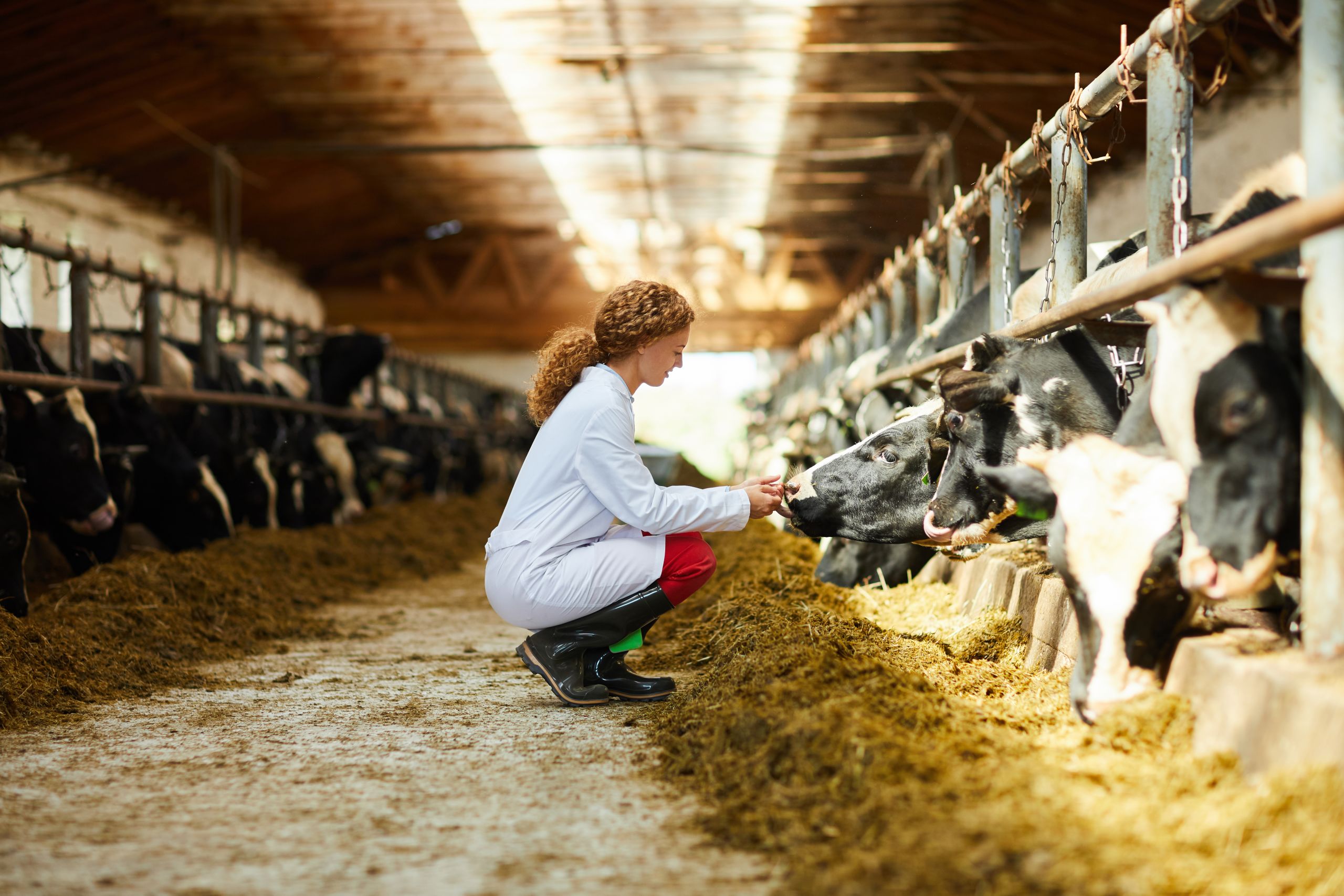
NSW increases minimum biosecurity standards in the egg industry
The NSW egg industry is raising biosecurity standards in an effort to ensure consumer confidence and maintain food safety.
In September 2018 Salmonella Enteritidis (SE) was detected in NSW layer flocks.
Since then NSW Department of Primary Industries, NSW Food Authority and Local Land Services have conducted a targeted program of surveillance and testing which has confirmed the presence of SE on 13 properties in NSW.
Industry have worked closely with government to help stabilise SE and Australian Eggs has produced a range of guidance materials to help reduce the risk.
To assist in raising biosecurity standards in the long term, a Biosecurity Control Order was issued on 1 August.
The Control Order applies to all persons in NSW that are in an area where eggs are produced, graded or packed, or poultry are bred, raised or kept for meat or egg production, on premises required to be licensed under the Food Act 2003 and Food Regulation 2015. It also applies to pullet rearing facilities.
Basic biosecurity measures required by the order include that all affected facilities implement a vermin control strategy, display biosecurity signage and provide shed boots or foot baths at the entrance to production areas.
Other measures to reduce the possible spread of Salmonella Enteritidis include provisions for the handling and storage of dead birds to prevent access by vermin and other animals, and for hand washing facilities or hand sanitiser to be provided at entrances to production areas.
The new rules will also require minimum levels of record keeping, including records of all persons entering poultry production facilities and written records of all deliveries to and from a property.
SE can survive in the environment for up to two years and investigations have shown that all properties confirmed to have been infected are interconnected in that people, eggs or equipment were moving between them.
The costs of improving biosecurity are also relatively small compared to managing an infection on a property.
Raising biosecurity standards is therefore crucial and will protect the egg and poultry industry from further spread, reduce human illness and maintain consumer confidence both now and into the future.
Compliance officers will visit every licensed egg and poultry production facility in NSW over the coming months.
They will assist facilities to meet the requirements of the Control Order and issue biosecurity signage free of charge.
The Control Order will remain in place for two years and anyone wanting more information can visit www.dpi.nsw.gov.au/SE
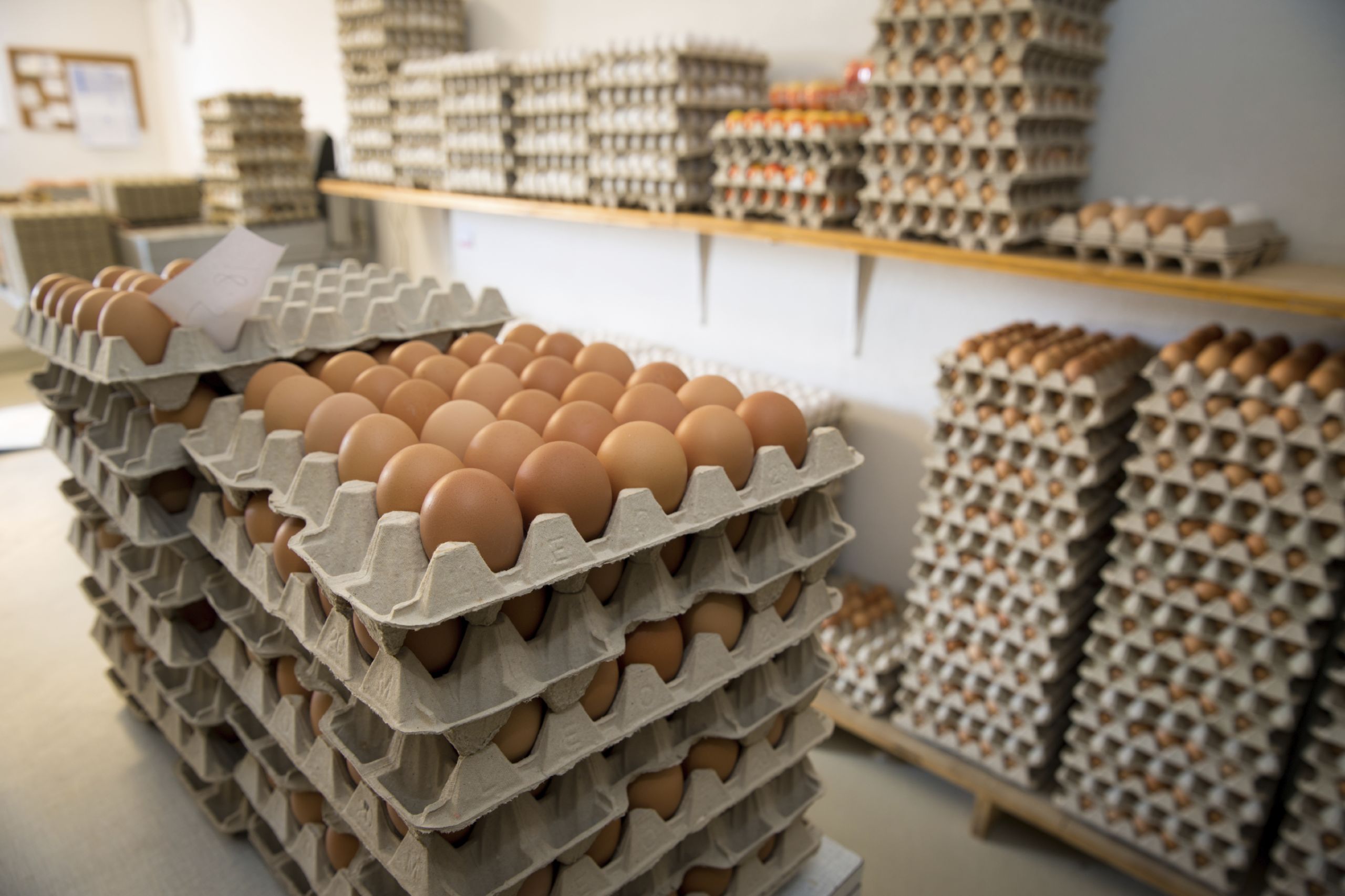
INTERNATIONAL ENGAGEMENT

Hort Connections
The International Engagement Unit (IEU) and horticulture team at NSW DPI recently showcased the ‘Journey of citrus’ to delegates at the 2019 Hort Connections trade show held at the Melbourne Convention and Exhibition Centre held 24-26 June.
Hort Connections is a joint industry conference between AUSVEG and PMA Australia-New Zealand Limited (PMA A-NZ) which caters to buyers and sellers from every segment of the fresh produce and floral supply chain and provides an influential space for networking, education and business for the entire industry.
NSW DPI promoted the work of our research scientists (biosecurity and production) and international engagement representatives and demonstrated our progressive and technologically advanced horticultural research organisation in line with this year’s theme, ‘Growing our Food Future’.
Hort Connections provided an opportunity for IEU to showcase its capabilities of identifying, improving and maintaining international market growth for key export commodities.
The next Hort Connections conference will be held 15-17 June 2020 at the Brisbane Convention and Exhibition Centr
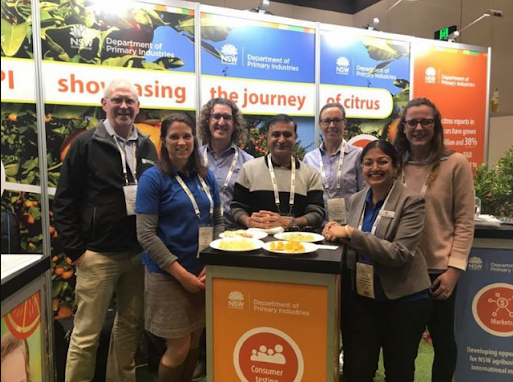
NSW DPI staff at the Hort Connections conference in Melbourne in June
NSW DPI staff at the Hort Connections conference in Melbourne in June
Genya Miller, Marketing and Brand Manager at MSM Milling presented her story of establishing and launching their Auzure canola oil brand into China’s cross-border e-commerce market. Ms Miller highlighted the importance of establishing a domestic brand first so Chinese consumers could be sure they were getting the same high quality product as Australian consumers. In the last two years the company has grown their exports from one trial shipment to monthly container shipments.
Alibaba’s Regional Director of Australia and New Zealand, John O’Loghlen, emphasised that Australia is Alibaba’s third biggest seller on Double eleven. Double eleven is Alibaba’s selling frenzy held annually on 11 November. In 2018, in a 24 hour period, gross merchandise value of sales was over US$30.8 billion.
Jack Lu, Austrade’s Senior E-commerce Advisor, gave an overview of China’s e-commerce ecosystem and highlighted cross-border retail growth. This market has grown from $28.2 billion in 2014 to $115.47 billion in 2018. Major sales platforms include Taoboa.com, Tmall.com, Tmall Global, JD.com, VIP com, Kaola.com and WeChat. Jack gave an outline of common marketing tactics in China, the most successful promotions being those featuring internet celebrities and key opinion leaders along with short video/live streaming. A major tip to the group was to ‘plan your strategy’ and protect your IP.
Register your interest for future missions by emailing
e-commerce@dpi.nsw.gov.au
BIOSECURITY WARRIOR

Stopping the spread of frogbit in NSW
John and his family were visiting a cafe in Bulahdelah when his 10 year old son who is passionate about leaves and nature spotted a different looking plant growing in the water feature.
The following week when John returned to work, he glanced at his 'A busy life' weed control calendar and recognised the feature weed for that month was the same as what they had seen at the cafe. John immediately reported his finding to the Biosecurity Helpline.
Following John's report, NSW DPI confirmed it was Frogbit - a serious invasive weed. Together with Mid Coast Council they quickly began surveillance work and developed a control strategy to minimise the spread.
Because of John's quick action the plant has now been removed from the cafe and three nearby ponds. John has helped stop this serious biosecurity threat to NSW.

Frogbit - a serious invasive weed
Frogbit - a serious invasive weed
Have your say
Current opportunities for you to share your knowledge and insights:
Property Identification Reforms
If you are part of the supply chain, we want to hear from you.
Submissions close 1 November 2019.

Events and training
Spotted something unusual? Now what?
Plant Health Australia has a new course available focussing on a grower’s role in reporting new pests and diseases, and some of the steps that may be taken in the early stages of plant pest incursion. The Pest Reporting and Responses course also includes the responsibilities of governments and industries in the early part of a pest incursion.
The course is free and takes around 15 minutes to complete. Register with BOLT (PHA’s Biosecurity Online Training platform) today.
More information
Training for Abattoir, Knackery and Saleyard Workers
NSW DPI and partners
More information
Vetlearn- Veterinarians, Hobby Farmers and Backyard Livestock
NSW DPI, Animal Health Australia and the Australian Veterinary Association
Ongoing
More information
Online Biosecurity Course for Beekeepers
Plant Health Australia and Australian Honey Bee Industry Council
Ongoing
More information




